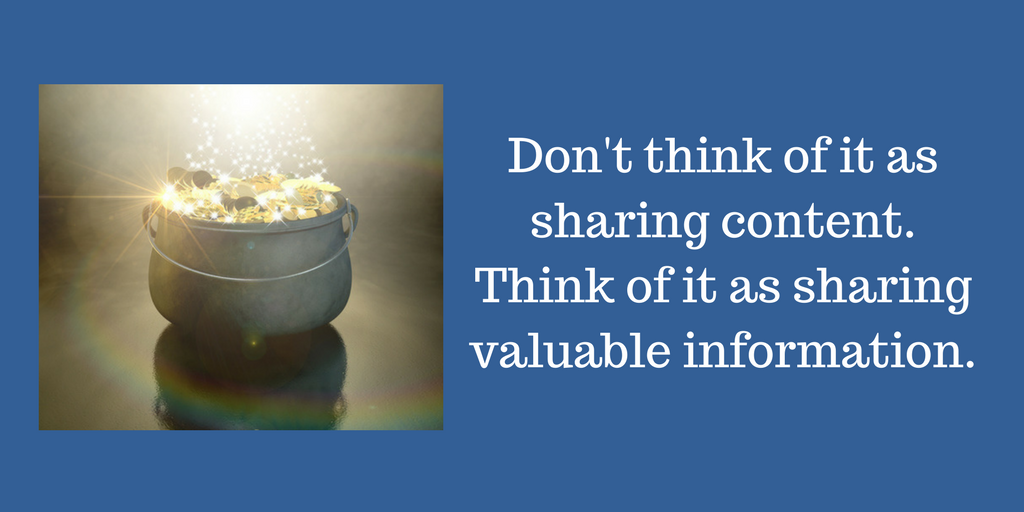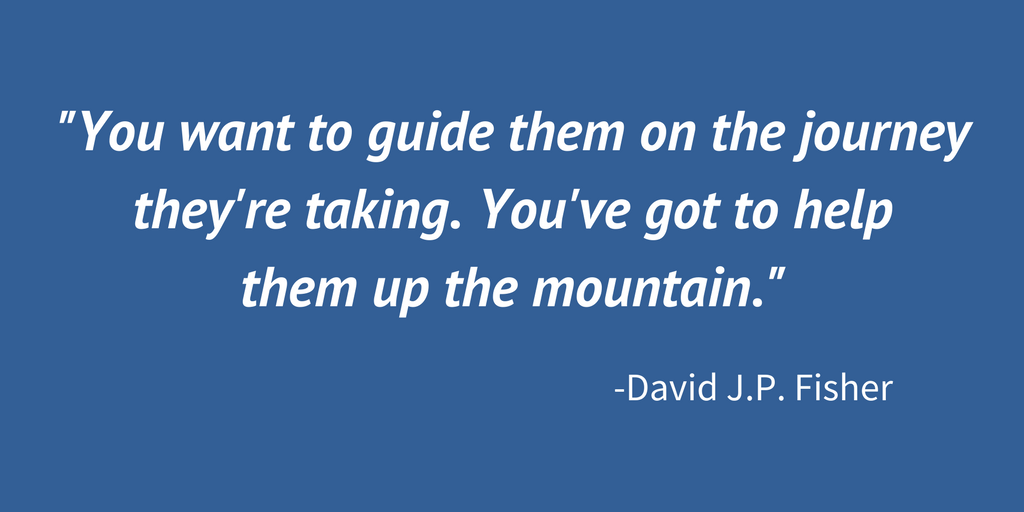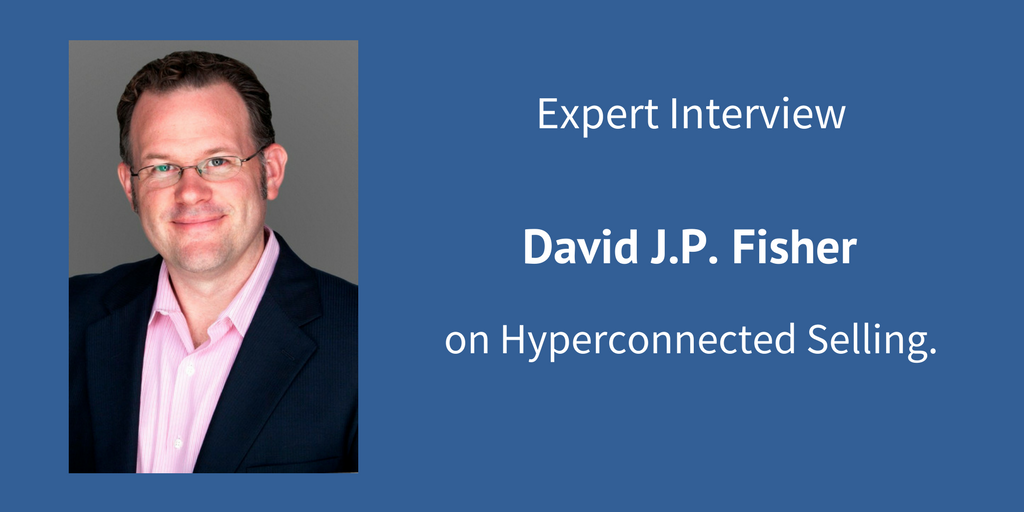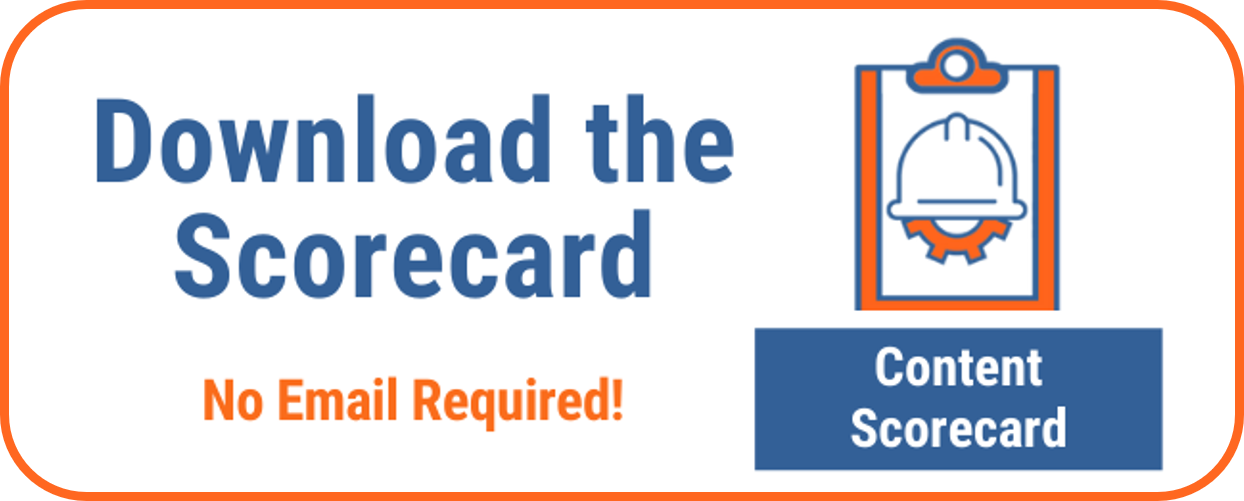Salespeople have reason to be nervous. Research shows that up to 67% of the buyer’s journey is now done digitally. The role of sales in the process is narrowing — but only if you, the salesperson, allow it to happen.
Salespeople should be nervous about that 67% statistic, explained in this post by SiriusDecisions. The article acknowledges that a customer may interact with a salesperson earlier in the buyer journey, but the point is that much of the buying cycle is done online, away from the salesperson.
Don’t sulk because your old sales role is changing. Instead, change yourself.
If people are doing all that research before they get to you, why not make yourself the information resource they need?
“You want prospects, customers, and people in your sphere of influence to think of you and your company as the experts,” David J.P. Fisher, sales consultant and author of Hyper-Connected Selling says. “And then when they’re ready to stop kicking the tires and become a buyer, they reach out to you first.”
So how do you become an expert?
Reassert yourself by becoming THE information source
One of the biggest challenges for your marketing department is finding ways to distribute content. By making yourself a distribution source and sharing content through social networks like LinkedIn, you not only help your company, you help build your own reputation.
In the marketing world, that’s called “content marketing.” Salespeople sometimes reject the strategy because they don’t see how it results in direct sales. And the term “content marketing” may be jargony and off-putting.
“But when I tell a salesperson that content marketing is really just sharing valuable information to build a relationship, they say, ‘I can do that!’” Fisher explains.
Make yourself a Sales Sherpa
Reframing the concept of content marketing as information sharing is just the first step in using content — er, information — to build relationships. Now you have to reframe yourself.
The old sales approach used to be you kept calling on people until they answered. And yes, there are telemarketers who still find success with that technique — although the long-term effectiveness is debatable.
A better approach is to become a “Sales Sherpa,” as Fisher explained. “You want to guide them on the journey they’re taking,” he said. “You’ve got to help them up the mountain.”
Sounds good in theory, but how does it work in the sales process?
The big disconnect with content marketing occurs when you move from theory to tactics. If you’re a salesperson looking to build relationships with someone on your prospect list, how can you integrate content into your everyday prospecting?
Before we jump into the 6-step process on how to make it happen, check out this expert interview with David J.P. Fisher on “Hyperconnected Selling.”
Step 1 – You need to look good online, but it doesn’t have to be perfect
We’re judged quite a bit by appearance. You need to look just as good online as you do offline.
Your website should look good. Your LinkedIn profile should be excellent — and you should always build on it. Don’t ever stop improving how things look, but also don’t use it as an excuse not to move on.
The “I’m not doing anything until we get a new website” excuse hurts no one but yourself.
Step 2 – Your distribution network must include more than prospects
If you’re going to be a distributor of information, you need a lot of help in the process. You may not be able to share directly with prospects who don’t know you, but you can share with other professionals in the field.
If you sell roofing services for a contractor, you could reach out to experts in related businesses — producers of shingles, rain gutters, flashing, chimneys, etc. — to share information online in blogs and other social media posts.
Build your network constantly by expanding your social media and personal network as much as possible. Anytime you meet someone, get LinkedIn with them. Send them an email, and ask them to subscribe to your company’s email newsletter.
Why include everyone and anyone? Because you just never know who will see it and share it. Here’s an example.
I posted a Winbound article on LinkedIn, and a former neighbor of mine clicked the “Like” button. It dawned on me that he had recently been promoted at his company to a management role, and so I mentioned that we could have a solution that might help his marketing team.
He said he would look into getting me a meeting.
I never would have considered reaching out to him as a prospect. But because I regularly distribute content, he found me and the connection was made.
Step 3 – Don’t be just a distributor – be a contributor
You may be a distribution source for content, but you can also become part of the team that creates it. That doesn’t mean you’re writing it, but you can share ideas with the marketing team. They are always looking for fresh insights.
Give them the customer’s perspective. Share objections you’ve received, and also let them know what’s been successful. Let them know what will help you close the deal, and they’ll create it for you.
I spoke to a sales manager the other day who mentioned the “dirty little secret” regarding how products are sold in his industry. It was a bogus sales technique that is being used, and we instantly created a post on the topic.
Step 4 – Share and help, don’t close (yet)
Remember, you are the Sales Sherpa helping prospects get to the point where they contact you. Don’t think the content you share is about your products or services. It’s about how to best help your prospects overcome their problems. You can share the latest industry trends and / or anything that’s germane to helping a prospect.
You’re trying to help, help and help some more. When they are ready to become a prospect, that’s when you can put your closer hat back on. But for now, just share information and be the information resource.
Step 5 – When you network, pay it forward
Salespeople think networking is all about fishing for leads. I was at a networking event where a sales guy was moving through the crowd, stopping by each person, giving his elevator pitch, and then moving on.
I chucked his card the moment he stepped away.
You’re not out to sell when you’re networking. You’re out to make a connection, which will eventually become part of your distribution network. So open every conversation by asking them what you can do to help them get more business.
The approach immediately lowers their defenses. When they see you’re there to give and not to take, they’ll see you as a partner (heck, maybe even a friend), and they’ll be much more obligated to return the favor.
Step 6 – Set distribution goals, not sales goals
You have to change your mindset from sales goals to distribution goals. Remember, you’re settling into a dual role.
In your distribution role, the key is to be consistent. Whatever social media you choose, establish a routine. Fisher tries to comment on three pieces of content a day, every day, on LinkedIn. He shares every blog post that his company generates.
Start small. Post one comment a day, every day. Whatever it takes to up your visibility.
Go from ABC to ABCD
Any salesperson has heard the term “ABC – Always Be Closing.” That’s true once someone becomes a legitimate prospect.
But as people do more and more research before they reach the salesperson, you need to refine the acronym to “ABCD – Always Be Closing and Distributing.”
Pass along information that will establish yourself as the Sales Sherpa. They are looking for a guide to get them up the mountain. The more people you help make that climb, the more your sales will climb.
Find out how your content and conversion ranks with our interactive version of the Content Scorecard you can fill in yourself – no email required for download.








